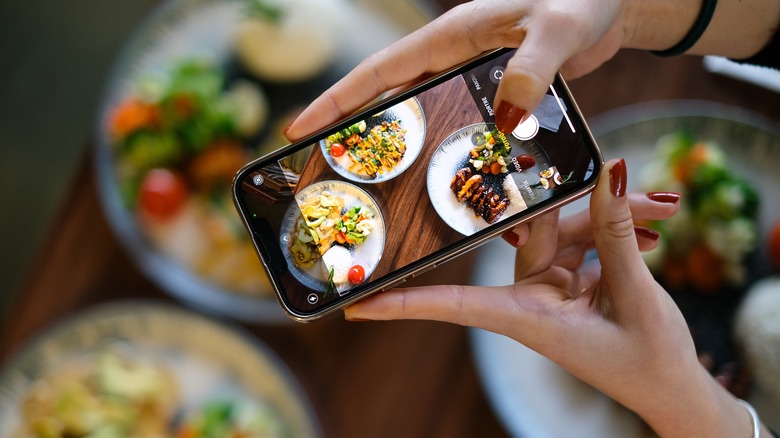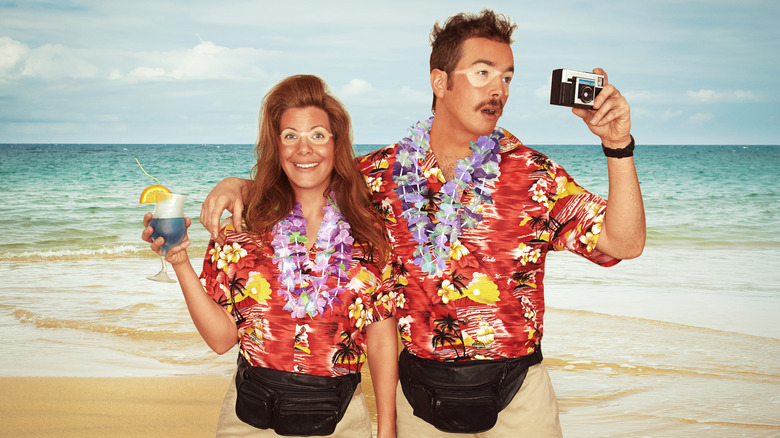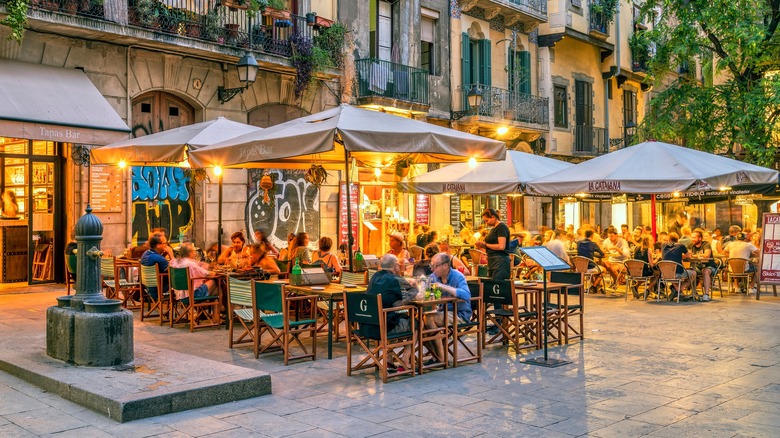The Easiest Way To Spot A Tourist Trap Restaurant Isn't What You'd Think
There's a lot of advice about how you can spot a tourist trap restaurant: Extraordinarily long menus with dishes from several different cuisines, staff out the front prodding you to eat there, and photos on the menu are just a few. But there's one good method that's often overlooked, and it doesn't even require you to look at the restaurant itself — check out the restaurant's parking lot.
More specifically, you'll want to look at the license plates of the cars parked there. If a large number of those plates are from out-of-state locations, there's a decent chance that the restaurant is packed with out-of-towners who probably have a lesser grasp on where the best places to eat are. Correspondingly, if there are a lot of local license plates in the parking lot, that's a green flag, although it's not necessarily a guarantee of the restaurant's quality; rather, it just means there likely aren't many tourists there. So, if that's the case, you may want to do a little research to figure out if it's a worthwhile place to eat.
There's one obvious exception, and that's if the restaurant is close to a state border. Washington D.C. is a great example, as diners with Maryland or Virginia license plates could well be from the local area — that is, the suburbs of D.C. that are outside the actual district but still very close by.
Tour buses and other red flags
A bigger warning sign beyond out-of-state license plates is the presence of tour buses in the parking lot. There's a good chance this means the restaurant is focusing its attention on catering to large crowds of tourists — and unlike locals, tourists won't be back regularly, so it may be less of a concern if the restaurant's food is mediocre.
Of course, a lack of tour buses is a good sign, but it may not guarantee that a restaurant isn't a tourist trap. For example, in a bigger city, there's a good chance tourists may just show up on foot or public transit, or park elsewhere. But there are other signs you can use to identify a tourist trap. You can check out the crowd. If it looks touristy (people with souvenir t-shirts, cameras around necks), that might be a sign. If you're in a country like Spain where people eat later, and the restaurant is packed at an early hour like 6 p.m., that's another sign. It's generally agreed upon that restaurants with hosts stationed out front trying to lure diners from the street is another bad sign, especially if they're offering discounts. Consider a restaurant's location, too. Restaurants near major attractions are arguably more likely to be tourist traps — and they're often overpriced to boot.
How to aim for the local spots instead
The late, great Anthony Bourdain was a serious proponent of eating in the same restaurants as locals, but this can be tricky. For example, you can't necessarily tell if the people dining in a restaurant are tourists or locals just by looking from a distance. But there are ways to find hidden gem restaurants that are away from the major tourist traps.
A busy dining room is always a good sign, assuming that you're checking the restaurant out at normal dining hours. Smaller, more intimate places can also be a good sign — while there are obviously exceptions, larger restaurants may be focused on quantity over quality. It can also be worth using your nose. If a restaurant smells good, then it's potentially a better place to eat.
Bourdain himself has plenty of advice on this topic, too. The big one is to ask locals. You can do this in person, asking anyone from tour guides to bartenders — with one exception, that Hotel concierges are sometimes known for directing guests to touristy restaurants. But if you're shy or just can't get people to talk, it's also worth looking up a local food website or forum to see what the locals are saying online.


